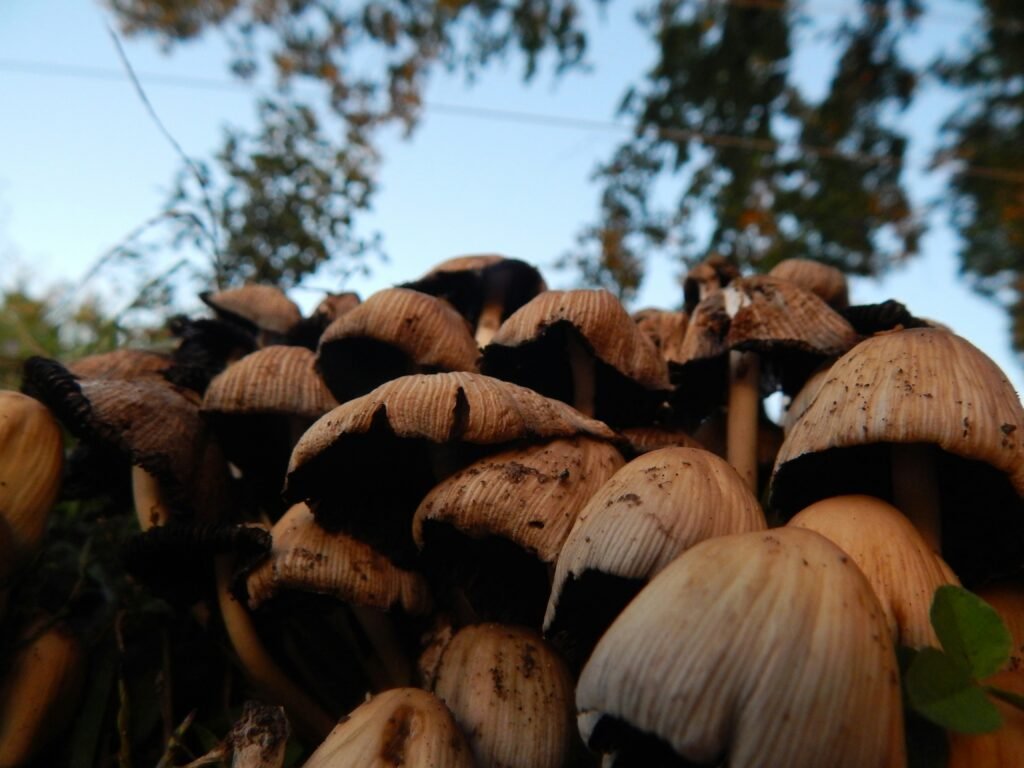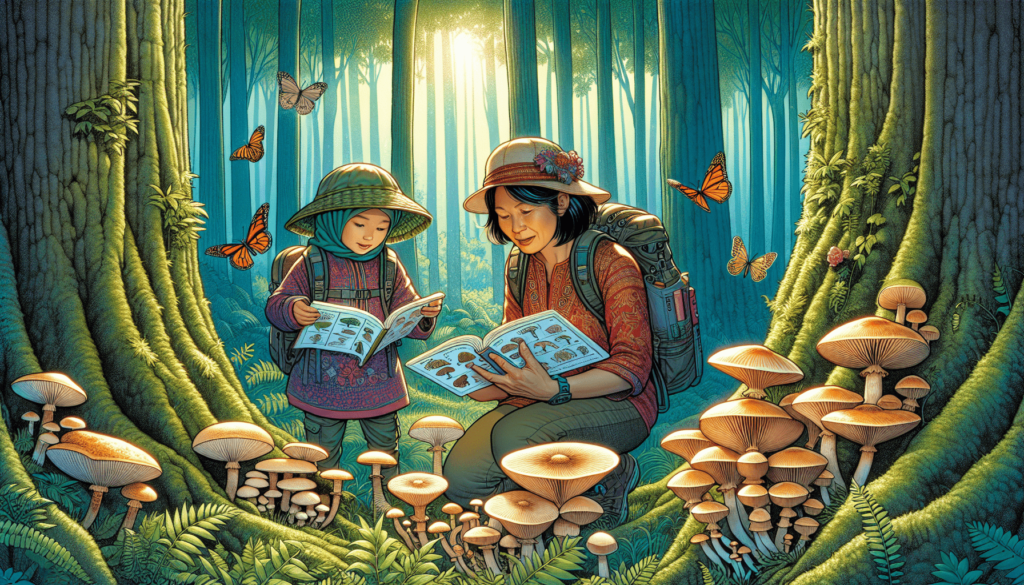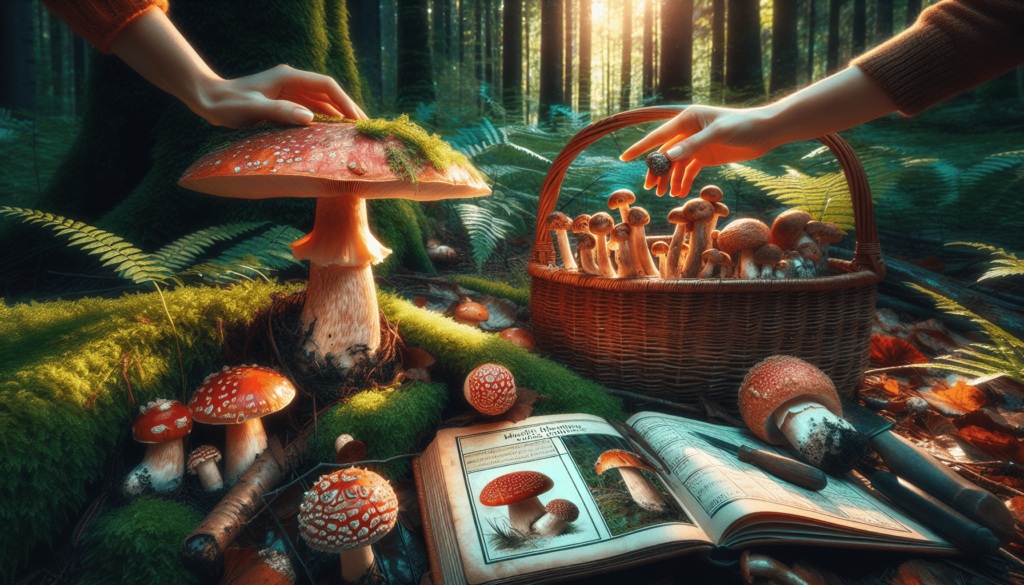Have you ever been intrigued by the idea of foraging for mushrooms but hesitant to try it yourself? In this article, we will guide you on how to safely embark on your mushroom foraging journey. From identifying edible mushrooms to understanding potential risks, we will cover all the essential tips and precautions you need to ensure a successful and safe mushroom foraging experience. So put on your walking shoes and get ready to explore the fascinating world of mushrooms!
Choosing the Right Location
When it comes to foraging mushrooms, choosing the right location is crucial for a successful and safe experience. Before heading out, it is important to research local wildlife laws and regulations to ensure that you are not breaking any rules. Different areas may have specific restrictions on mushroom foraging, especially in protected areas or national parks. By familiarizing yourself with the local regulations, you can avoid any legal issues during your foraging expedition.
In addition to following regulations, it is essential to find suitable mushroom habitats. Different mushroom species thrive in different environments, so it is important to do your research and identify areas that are known to host a variety of mushrooms. Forests, meadows, and woodlands are often ideal places to find mushrooms, as they provide the right conditions for their growth.
It is also crucial to avoid heavily polluted areas when foraging for mushrooms. Mushrooms have the ability to absorb toxins and pollutants from their surroundings, which can pose a risk to your health if consumed. Be mindful of areas near factories, industrial sites, or heavily trafficked roads, as these are more likely to be contaminated.
Lastly, it is important to respect private property and obtain permission before foraging. Trespassing on private property is not only illegal but also ethically wrong. Always seek out public lands or obtain permission from the landowner if you wish to forage on private property. By doing so, you can ensure a positive and respectful experience.
Educating Yourself
Before embarking on a mushroom foraging adventure, it is essential to educate yourself about different mushroom species. Studying the characteristics of different mushrooms will help you identify and differentiate between edible and poisonous varieties. There are countless mushroom species in the wild, each with its own distinct appearance and properties. Understanding their specific traits will be instrumental in making informed foraging decisions.
To begin, familiarize yourself with the common edible mushroom species in your area. Research their physical features, including cap shape, color, and texture, as well as stem structure and gill patterns. Learning to identify these edible mushrooms will give you a good starting point for your foraging journey.
Equally important is learning to identify poisonous mushrooms. There are several toxic mushroom species that resemble edible ones, making it crucial to be able to distinguish between them. Look out for warning signs such as distinctive colors, unusual growth patterns, or the presence of specific visual characteristics that are indicative of poisonous varieties.
Aside from self-study, it is also wise to consult field guides or experts in mushroom identification. Field guides provide valuable information on different mushroom species, their habitats, and identifying features. The guidance of experienced foragers or mycologists can greatly enhance your learning process and help you acquire the necessary knowledge to safely forage for mushrooms.

Assembling Essential Supplies
Before heading out into the woods, ensuring you have the right supplies is essential for a successful and enjoyable mushroom foraging trip. Wearing sturdy and comfortable clothing is a must, as you will likely be walking through varied terrain and may encounter prickly plants or insects. Opt for long pants and sleeves to protect your skin from scratches or insect bites.
Equipping yourself with a reliable mushroom field guide is an absolute necessity. A good field guide will have detailed descriptions and clear photographs of various mushroom species, allowing you to identify mushrooms accurately while in the field. Make sure to choose a guide that is specific to your region to maximize its usefulness.
Another essential item to bring is a mesh bag or basket for collecting mushrooms. Using a mesh bag or basket allows the spores from the mushrooms to disperse as you walk, helping to ensure the future growth of mushrooms in the area. Avoid using plastic bags, as they can cause mushrooms to sweat and deteriorate more quickly.
Carrying a knife or mushroom harvesting tool is also recommended. A knife can be used to cut mushrooms cleanly from their stems without damaging the mycelium or surrounding vegetation. Alternatively, mushroom harvesting tools, such as specialized knives or mushroom brushes, are designed specifically for this purpose.
In addition, it is important to pack a compass or GPS device for navigation. Mushroom foraging can lead you deep into the woods, and it is easy to become disoriented and lose track of your location. Having a compass or GPS device on hand will help you find your way back to familiar territory.
Lastly, don’t forget to take safety gear such as gloves and a first aid kit. Gloves protect your hands from potential irritants or allergens, while a basic first aid kit can be handy in case of minor injuries while foraging.
Knowing When and Where to Forage
Knowing when and where to forage for mushrooms is crucial for a successful outing. Different mushroom species have specific growing seasons, so it is important to choose the right time of year for mushroom foraging. Generally, spring and fall are the prime seasons for mushroom hunting, as many species fruit during these times.
Identifying ideal weather conditions is equally important. Mushrooms thrive in moist, damp environments, so it is best to forage after rain or during periods of high humidity. Look for areas with recent rainfall or where the ground appears damp, as these conditions increase the chances of finding mushrooms.
Consider taking daylight hours into account when planning your foraging excursion. Foraging during daylight hours allows for better visibility and helps you to accurately identify mushrooms. Additionally, mushroom species that are part of nocturnal ecosystems may not be readily visible during the night, making daylight hours more suitable for their discovery.
When starting out, it is advisable to search in forested areas. Forests provide the ideal habitat for many mushroom species, as the shade and leaf litter create a favorable environment for their growth. Pay close attention to fallen trees and decaying logs, as these are often hotspots for mushroom activity.

Identifying Mushrooms
When you stumble upon a mushroom, correctly identifying its species is of utmost importance. Observation, note-taking, and utilizing a field guide or mushroom identification app are crucial tools for the identification process.
Take the time to observe and take note of the mushroom’s various characteristics. Note the color, shape, texture, and size of the cap, stem, and gills. Look for any unique features, such as rings on the stem or specific growth patterns. Detailed observations will aid in narrowing down the possible identification options.
A field guide or mushroom identification app can be invaluable resources for accurate identification. These tools provide comprehensive information on the appearance, habitat, and distinguishing features of various mushroom species. Use the photographs and descriptions as a reference to match the observed characteristics of the mushroom you have encountered.
Pay particular attention to spore color, gills, and stems. Spore color is an important clue in mushroom identification, as it can help distinguish between closely related species. The color of the gills, the structures underneath the cap, can also vary widely among different mushroom species. Similarly, the shape, texture, and color of the stem can provide important clues for accurate identification.
Lastly, keep an eye out for unique features and growth patterns. These distinctive features can be key in identifying specific mushroom species. Examples include the presence of a veil, the presence or absence of a skirt or ring, or the growth of mushrooms in clusters or rings. These unique patterns and features can help narrow down the options and lead to a more accurate identification.
Harvesting Mushrooms
Once you have positively identified an edible mushroom, it is time to harvest it properly. Proper harvesting techniques contribute to the sustainability of mushroom populations and ensure a bountiful harvest for future foragers.
To harvest mushrooms, use a knife to cut the stem at the base. Avoid pulling or tearing the mushrooms, as this can damage the mycelium and prevent future growth. Cut the stem cleanly, close to the ground, leaving the surrounding vegetation undisturbed.
Handle mushrooms gently to avoid bruising. Bruised mushrooms deteriorate quickly and may become inedible. Place harvested mushrooms in a breathable container, such as a mesh bag or basket, to allow air circulation and prevent moisture buildup.
It is important to leave behind small or uncertain specimens. These young or immature mushrooms contribute to the future reproduction and growth of mushroom populations. By allowing them to mature and disperse their spores, you contribute to the sustainability of the ecosystem.

Avoiding Poisonous Mushrooms
Avoiding poisonous mushrooms is paramount to ensure your safety while mushroom foraging. Never consume a mushroom without positive identification. Even if a mushroom looks similar to a known edible species, it is crucial to positively identify it before consumption. Consuming even a small amount of a poisonous mushroom can have severe consequences.
Be cautious of look-alike mushrooms, as many toxic species closely resemble edible ones. Pay careful attention to differences in color, stem structure, gill patterns, or other distinguishing characteristics. Some toxic mushrooms have subtle differences that can easily be mistaken for edible varieties.
Do not rely solely on visual characteristics for identification. Some mushroom species have identical or similar appearances but differ in toxicity. Chemical tests, such as the spore print test, can provide further evidence of a mushroom’s identity. When in doubt, seek help from an expert or mycologist for proper identification.
For added safety and peace of mind, it is advisable to double-check the identification of any mushroom with an expert. Reach out to local mushroom foraging groups, mycological societies, or experienced foragers who can provide guidance and expertise in identification. Their knowledge and experience can help you make accurate decisions when it comes to identifying and consuming mushrooms.
Respecting the Environment
Respecting the environment is an essential part of ethical mushroom foraging. By following these principles, you contribute to the preservation of the ecosystem and ensure a sustainable future for mushroom populations.
Only take what you intend to consume. Harvesting only what you need reduces unnecessary waste and allows for the continued growth and reproduction of mushroom species. Avoid overharvesting, particularly in areas where mushrooms are scarce or protected.
Practice Leave No Trace principles and clean up after yourself. Remove any trash or debris you generate during your foraging trip. Leave the environment as you found it, without damaging or disturbing the surrounding vegetation or wildlife.
Avoid damaging surrounding vegetation or wildlife while foraging. Be mindful of where you step and avoid trampling on fragile plants or disturbing wildlife habitats. Show respect for the natural environment and be mindful of the impact your presence may have.
By foraging responsibly and respecting the environment, you ensure the sustainability of mushroom populations and safeguard the delicate balance of the ecosystem.

Preparing and Cooking Mushrooms
Once you have successfully foraged a bountiful harvest of edible mushrooms, proper preparation and cooking are essential to unlock their delicious flavors. Follow these guidelines to ensure a safe and enjoyable culinary experience.
Clean mushrooms properly before cooking. Remove any dirt, debris, or insects by gently brushing them off or wiping them with a damp cloth. Avoid washing mushrooms excessively, as they can absorb water and become mushy in texture.
Choose suitable cooking methods for different mushroom species. Different mushrooms have varying textures, flavors, and ideal cooking techniques. Some mushrooms are best sautéed, while others shine when roasted, grilled, or added to soups and stews. Follow recipes or recommendations specific to the mushroom species you are working with to achieve the best results.
When cooking mushrooms, always ensure they are cooked thoroughly. While some mushroom species can be eaten raw, cooking mushrooms properly eliminates any potential toxins or bacteria that may be present. Thoroughly heating mushrooms to an appropriate temperature ensures they are safe to eat and enhances their flavor and texture.
Experiment with different recipes and cooking methods to fully enjoy the flavors and versatility of mushrooms. From creamy risottos to flavorful stir-fries, mushrooms can elevate a wide range of dishes. Share your culinary creations with friends and family to spread the joy of mushroom foraging.
Sharing the Experience
Mushroom foraging is not only a rewarding activity but also a community-building experience. Sharing your knowledge, experiences, and photographs with others allows you to connect with like-minded individuals and contribute to the broader mushroom foraging community.
Consider joining mushroom foraging groups or clubs in your area. These communities offer opportunities to meet fellow foragers, share tips and insights, and learn from experienced members. Participate in group forays or events organized by these clubs to expand your knowledge and meet new people who share your passion.
Educational workshops or events are another great way to deepen your understanding of mushrooms and foraging techniques. Look out for seminars, classes, or lectures offered by local mycological organizations or nature centers. These events often feature knowledgeable speakers who can teach you advanced identification techniques and provide valuable insights into the fascinating world of fungi.
Take advantage of online communities and forums dedicated to mushroom foraging. Joining these platforms allows you to connect with a global network of mushroom enthusiasts. Share your findings, ask questions, and engage in discussions to learn from fellow foragers around the world. These platforms also provide a space to showcase your mushroom photography and inspire others with your discoveries.
By sharing your experiences and engaging with others, you contribute to the growth and knowledge-sharing within the mushroom foraging community. Through these interactions, you can continue to expand your own understanding and appreciation of the remarkable world of mushrooms.
In conclusion, safely foraging for mushrooms requires careful planning, education, and respect for the environment. By choosing the right location, educating yourself about different mushroom species, assembling essential supplies, knowing when and where to forage, identifying mushrooms accurately, harvesting and avoiding poisonous varieties responsibly, respecting the environment, preparing and cooking mushrooms properly, and sharing the experience with others, you can ensure a fulfilling and safe mushroom foraging adventure. Embrace the beauty and wonder of the natural world, and happy hunting!

